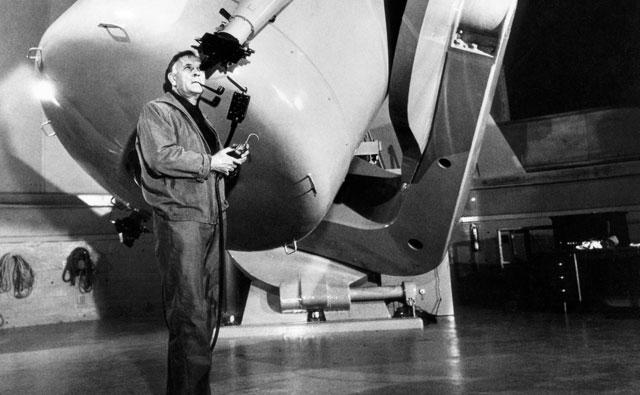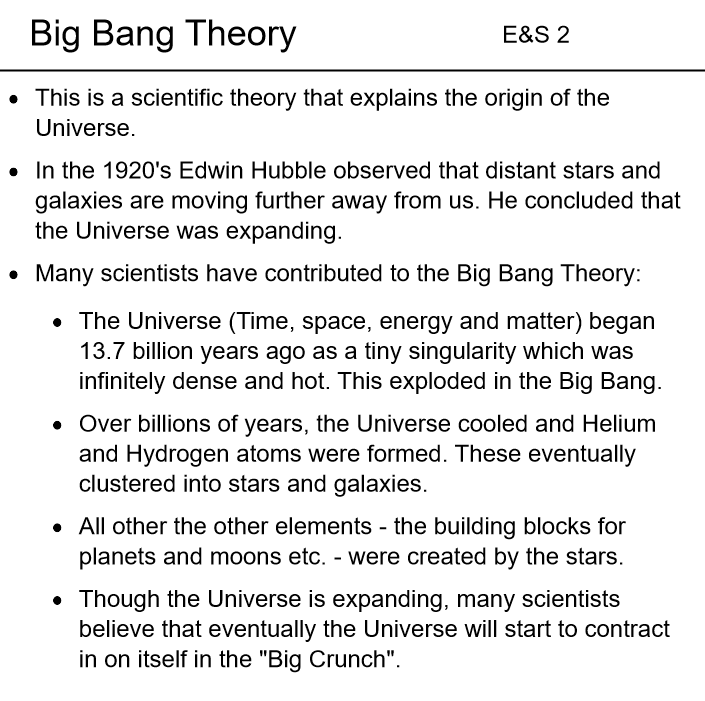Big Bang Theory
|
Edwin Hubble
In the 1920s the American astronomer Edwin Hubble was the first to prove that there are galaxies outside the Milky Way. By using Cepheid variable stars to calculate the distance of the Andromeda Nebula (as it was then known) from the Earth, Hubble showed that it was a separate galaxy and not a gas cloud in the Milky Way. Later, by comparing the relative velocities of galaxies (measured as red shifts) with his measurements of their distances from the Earth, Hubble showed that the further away a galaxy is from any point in space, the faster it appears to move because of the expansion of the Universe – Hubble's Law. |
|





